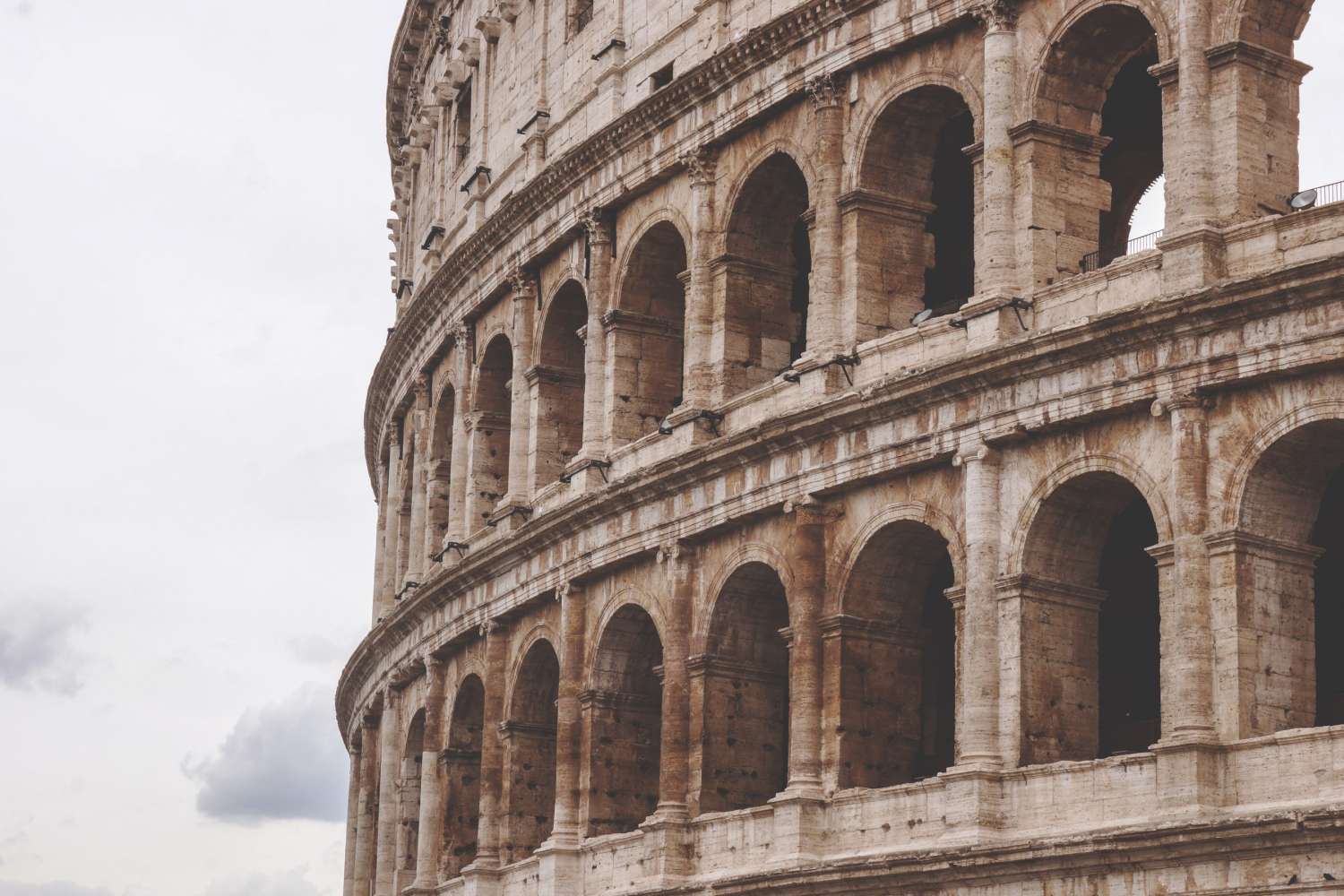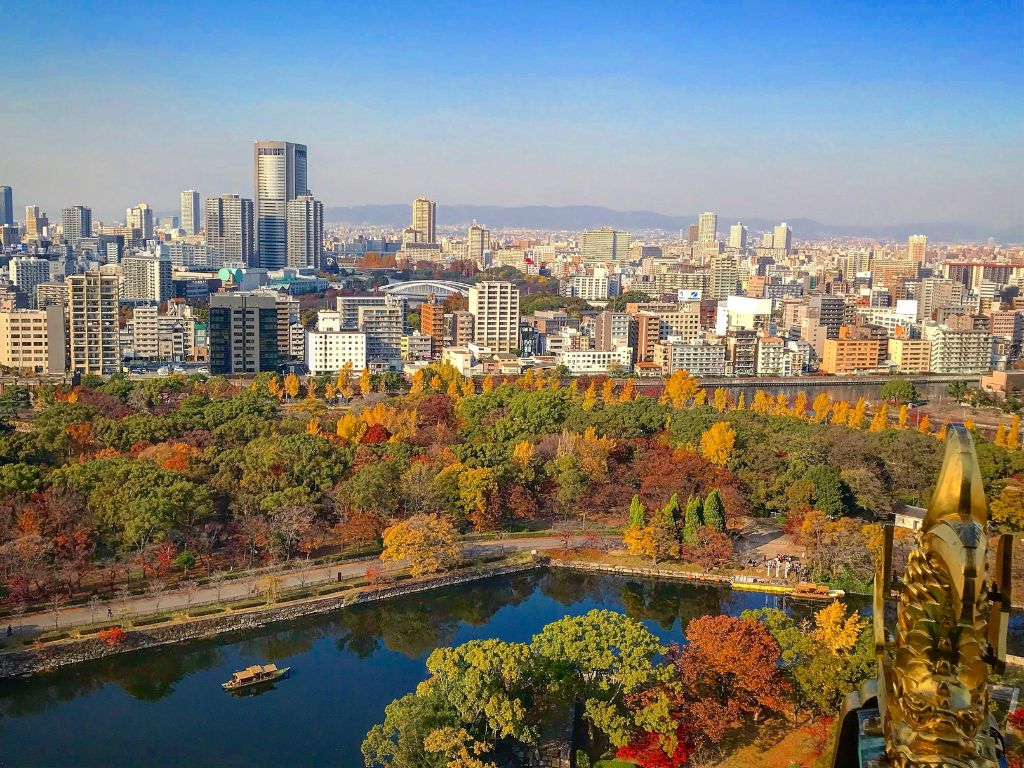Context founders Paul and Lani know a thing or two about traveling with kids—with their first daughter being born in Rome, their now family of five has been around the globe (literally, by land and by sea). They brought their own experience of Rome with an inquisitive youngster to this conversation with Linda Nolan, art historian and Context Colosseum guide extraordinaire:
When my daughter, Stella, was around 3 or 4, we used to walk down the Esquiline Hill together from our apartment on via Giovanni Lanza and spend hours jumping around the bits of broken columns and Travertine that encircle the Colosseum. She could spend hours there, just hopping from piece to piece, occasionally looking up at the pockmarked arches of the amphitheater with all the wonder of… well, a three-year-old.
It’s no surprise that our Ancient Rome Discovery walk, which is a walk specifically designed for touring the Colosseum with kids, is one of our most popular tours. As a parent, when I am in Rome, one of my primary missions is to expose my kids to the deep, fascinating history of the city and ignite their curiosity. Few places are more impactful than the Colosseum.
Of course, the Colosseum is also packed with people. And this makes it a particular challenge with kids. Context Travel sat down with one of the trained scholars who leads the Ancient Rome Discovery walk with kids, Linda Nolan, and we asked her about strategies for touring the Colosseum with kids and making it come alive.
Ignite Your Child’s Curiosity- Touring the Colosseum with Kids
Context Travel: The Colosseum is a big place and crowded. What is one word of advice you’d give a friend who was visiting with his two children, let’s say ages 10 and 12, to survive?
Linda Nolan: Two things: 1) have a focus; 2) take time to look.
Like visiting any site or a new city, you must do a little research in advance. For archaeological sites, even a site so relatively well preserved as the Colosseum, one must do a little prep. Look up images of reconstructions. Look up web-site that give “fun facts” and summaries about how the site worked. Think about a “focus” for the visit. Do you want to look at how the building was constructed? Or are you more interested in thinking about how the building worked with the thousands of the people who would go there? Or do you want to evoke the experience of a person from the past?
When you arrive, do not rush inside. Take your time outside, in the shade of the trees just to the the south-east of the monument. There is a low wall where you can sit and talk about what it would have been like to visit the Colosseum in antiquity, moving through the city, approaching the numerous doorways, looking for the Roman numeral above the entrance that would match your own “ticket”. I like to joke about how going to the Colosseum in antiquity was much more efficient than today’s single entrance! Although so much of the action happened inside the building, there is plenty to see outside, from the missing half of the outer-ring, the 19th century restorations, the way certain archways are filled in, the holes in the travertine from where scavengers dug out the metal guide-pins, and those Roman numerals over the doorways.
CT: Kids connect with information about history in a lot of different ways, and we use a wide range of tools when we lead a family walk in Rome. Looking into that tool chest, what do you think is your most effective tool when you visit the Colosseum?
LN: I make connections between how ancient sites were “lived in” much like their neighborhoods back home. I try to bring out the idea that the Colosseum was one of a matrix of buildings in a “neighborhood” that was filled with places they would find at home…a gym, apartment buildings, a hospital/morgue, religious buildings, public drinking fountains, etc. I also try to emphasize that the Colosseum was just one of several types of entertainment spaces that included the ancient Roman “circus” (race track), the music hall, and the theater. The Colosseum was not even the biggest or the most popular! If only the Circus Maximus was preserved, modern tourists might get a different idea of popular entertainment in the ancient Roman world, one filled with chariot races rather than gladiatorial matches. This also helps to ease the minds of young visitors who find it a bit off-putting to hear about animals and people being killed inside the Colosseum. Not everyone in ancient Roman society went to the Colosseum or enjoyed the spectacles. I know I would have been at the Circus Maximus watching the chariot races! Or the Theater of Marcellus watching a Greek play.
CT: When I speak with people who’ve participated in our walks I often hear that it’s the hidden nooks and crannies—the surprises—that they remember best. Thinking about visiting the Colosseum with kids, what is one big surprise or hidden space that always elicits that, “oh gosh” response?
LN: People are often surprised to hear that ancient buildings including the Colosseum, the Pantheon, the Curia in the Roman Forum, survive because they were turned into Christian churches. This opens up a discussion about how ancient buildings were recycled or reused for religious reasons, but also practical purposes such as living spaces. Young visitors like hearing about how people lived in the Colosseum during the middle ages and I often ask them if they would want to live in the Colosseum. I usually get mixed responses due to the bathroom situation, which was certainly much better in the ancient Roman world! We take time to look for the physical evidence at the site for where people lived, what has been removed, and how the site is still visited by devout Christians (the massive bronze cross and other symbols of the papacy are clear indicators).
Colosseum Tickets – Information
1. We recommend purchasing tickets rather than opting for free tickets for children. Unfortunately, you have to wait in line to verify the ages of your kids, which can take up to an hour.
2. Recently, due to increased security concerns, new screening procedures were put in place for entry to the Colosseum. With only a handful of metal detectors at the only entry point to this popular site, wait times for the security line are significantly longer than they once were. By the afternoon they can be up to almost two hours. This is why touring with Context is always done in the morning when the queue is at its shortest.
Linda Nolan is an art historian who leads tours with Context in Rome, including our Ancient Rome Discovery tour. Along with the other expert guides who lead this walk Linda is trained in Visual Thinking Strategies and other inquiry-based learning techniques to help children connect with and learn about art and culture.
Want to learn with a true expert? Get a comprehensive view with one of Context's private or small group tours in Rome!













